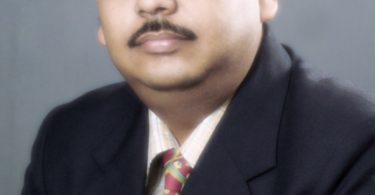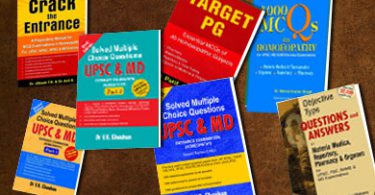Homeopath by chance and not by choice at first was introduced to Homeopathy after she herself was treated with Homeopathy for Ulcerative colitis.
She officially introduced homoeopathy to Japan, a conventional drugs superpower at the zenith of conventional medicine. This miracle would not have been possible without Torako Yui’s input and energy. After completing her post-graduate studies, in 1994, she became the first registered homoeopath with the Homoeopathic Medical Association (HMA). She has laid the groundwork, such as diffusion of homoeopathy, clinical development system, education of homoeopathic specialists, establishment of homoeopathic profession, domestic production of homeopathic remedies, translation of important homoeopathic literatures, and writing many guide books of homoeopathy.
In the same year, she set up Nippon homoeopathy center for homoeopaths to give homoeopathic consultations and an association for patients and users called ‘Homoeopathy Toranoko’.
She started her activities of giving homoeopathic lectures and consultations since 1995 when almost of all Japanese people never heard of word ‘homoeopathy’.
In April 1997, she established the first homoeopathic college, called the Japan Royal Academy of Homoeopathy (RAH) to bring up professional homoeopaths.
In 1998, she founded the Japanese Homoeopathic Medical Association (JPHMA) for the purpose of spreading homoeopathy, academic study and research, homoeopathic education, establishment of homoeopathic profession’s status, international exchanges and so on.
She supervised the translation of ‘Organon der Heilkunst 6. Auflage’ ‘Die Chronischen
Presently, she has devoted her life to introducing homoeopathy across the world.
ED: How you were introduced to Homeopathy?
Torako Yui: “When I was thirty-three years old, I suffered from ulcerative colitis and for the next three years I had melena, as the blood from the intestinal wall mixed with my stools. When the condition was at it worst, I would often feel the urge to defecate – sometimes up to fifteen times a day, which meant that leaving the house or the office was fraught with difficulty. Of course, as this was due to ulcers, I had terrible colic too.
For the first two years, I was given a variety of treatments, including steroids, but these were only temporary palliatives; as soon as I felt stress or under pressure, the ulcers spread and started to bleed. My lifestyle was in fact the reason why the ulcerative colitis was so intractable; I would often ignore the tiredness of my body and work straight through the night.
It was in the second year of treatment for this illness that I encountered homoeopathy. I had begun to get very depressed and negative about my life. It felt so unfair, as though I had been specially singled out to suffer such distressing symptoms. With hindsight, it is obvious that I could not heal myself in such a poor mental condition. My condition deteriorated and I was prescribed tranquilizers, diuretics, iron pills, and antibiotics without any success. I was finally told that I would have to have an operation to cut out the affected part of the bowel and have a colostomy.
That very night, I had a dream about a treatment. I am now sure that my dream told me to seek homoeopathic treatment. When I awoke, however, all I could recall of the dream was the phrase: “treat like with like, a treatment requires a similar.” I rang a British colleague and recited this phrase. She told me that I must be thinking of homoeopathy and it all came back to me – it was indeed homoeopathic treatments I had dreamt of. Now, I am not normally the sort of person who believed that dreams contained omens but you will remember that I was desperately distressed at the time.
My first visit to a homoeopath was very strange, some questions often seemed irrelevant while others could have come from the mouth of a psychologist; they were so able to make me feel naked and exposed. I was asked about my habits, my character, and the way I thought things through. I was also asked about how I was affected by the sun, the moon, and various types of weather. I was questioned about my eating preferences, my fears, if I had regular dreams, and about my ability to deal with my emotions. Some questions were truly bewildering; I was asked my birth weight, if I had been breast-fed, and a series of questions about my family’s medical history. I felt I knew very little about myself and even less about my family; such things were not discussed by my parents.
Throughout this session, I was waiting for the homoeopath to ask me about my condition and I tried to bring up my condition, as I wanted to talk about it, but the homoeopath did not seem to regard it as important. In the one hour long consultation, we spoke about my ailment for as little as five minutes. As the consultation finished, he handed me four sugar pilules, each with a different name. I began to feel cheated; the homoeopath had no stethoscope, no white coat, no interest in my condition, but just four tiny sugar pills. I wondered why I had put any faith in my dream.
When I arrived home, I decided that I would take the pilules anyway. To throw them away would have been a waste of money and taking one such small pill once a day would be unlikely to do me harm. On the fifth day, I felt so weak that I could not get out of bed; I was feverish and my joints ached. Having dragged myself to the toilet, I returned to bed doubled up in agony, the pain was terrible. I phoned the homoeopath and begged for help: “Please help, I cannot stand up and all my joints feel inflamed.” His reply was curt: “That’s good news. Go back to bed and try to relax and sleep.” Then he hung up on me. I could not believe it; how could this be good? The man was obviously a charlatan, a quack, and a snake-oil salesman. How could I have been so stupid to have been taken in? Yet, as the pain increased, I noticed that I did not have diarrhea. The pain reminded me of a severe case of influenza I had had when I was twenty-six. I had kept on with my course of antibiotics but they did not provide me with any relief. I was still feverish and doubled up in pain. Three days after I taken the last pilule, the pain eased and I began to feel lightheaded. The diarrhea had returned, however it was no longer a pinkish tone but dark red. As I had been unable to eat the previous days, I realised that I must be discharging the residues of blood from my bowel.
I noticed a week or so later that I was becoming quite angry. These waves of anger became more frequent and I often had the urge to break things. It felt as though I had been betrayed and let down by society; all the efforts I had made in the workplace amounted to nothing. I would never be able to achieve fame and fortune in this male-dominated society, where anyone outside of the accepted norms is systematically ostracized. I was unhealthy because I worked so hard to earn the praise of my boss but I ignored my body. I was letting myself be evaluated by the judgments of others and I was making myself ill. I realised that there was still a child inside me seeking approval from the boss, just as I had previously sought praise from my emotionally distant mother. Seeking praise had left me feeling worthless and desperate.
Trapped in such an emotionally sensitive state, I found myself veering between rage and tears. As my anger left me, I felt sad; sad that life could be so harsh. This might sound a little childish but it struck me that I was still carrying the pain from childhood traumas and it was this inner child who was weeping in frustration. Curiously, I did not immediately notice the physical changes happening at this time; my stools, though soft, were no longer bloody.
One day, looking through my tears and contemplating the sadness of my childhood, I saw the first spring blooms in the garden: crocus, Victoria plum, and water lilies. Walking out into the chilly air, it occurred to me that these beautiful blooms lived their whole lives without being able to voice a complaint, or walk away from a problem. I realised that despite my complaints about the lack of respect from my work, the lack of money in my life, and so on, I still had more freedom than these plants (and indeed most of the natural world). The inner child inside was controlling me – as a child would, without fully-formed experiences. I realised that if I perceived an issue as distressing, I could easily allow myself to become distressed, so if I looked on a problem as being a challenge, I should be able to rise to that challenge. I began to appreciate that the way I controlled my mind would affect my overall health; I could not let the inner child run my life and I could no longer find peace if I kept focusing on the world of profit and materialism. I believe that my disease taught me these lessons.
The ulcerative colitis was completely cured within a month with the remedy Carcinosinum. As I explained this to the homoeopath, at my second consultation, I noticed that he was smiling happily, as if he knew this would happen. My whole character had changed. Whereas I used to be quite strict and a bit of a perfectionist, I was now quite sloppy. I did what I wanted to do when I wanted to do it. I became lazy about doing the housework and my house always looked like it had just been burgled. All I wanted to do was to work in the garden and the longer I spent there, the happier I became – just like a happy child without a care in the world. As I eased back into a life of contentment, I realised that I wished to pass on this knowledge and study homoeopathy.
The excitement at starting my homoeopathic studies was soon tempered by the difficulty I had with many of the texts on the course. The books were often over a hundred years old and filled with Greek, Latin, and Old English words; it truly was all Greek to me as a Japanese and I noticed many of the British people felt the same way. I asked for special support, as I was crying again after classes, but it was not forthcoming. Perhaps they did not know how to help me.
Despite the tears and the frustration at not being able to master these texts, I could not abandon my desire to learn homoeopathy and to introduce this brilliant practice to Japan. I decided to make a clean break and try starting my studies at a different college, where they indicated that they were more able to support foreign students. Indeed, when I had an interview with the Principal Robert Davidson, he said something that I found very odd: “Welcome, we have been expecting you. We thought you might be an experienced medical practitioner but here you are, a young woman… This does not matter. Homoeopathy is definitely needed in the Far East, so you must take your studies seriously and bring homoeopathy to Japan!” Robert and the college staff were all generous in their support, as was my friend and private tutor, the homoeopath Meg Portal. When I completed the three year course, I was lucky enough to enter a post-graduate course run by Dr. William Nelson, who had worked on the Apollo space project. Dr. Nelson taught anatomy, physiology, pathology, and homoeopathic energising treatments. It was after I graduated from this course that I went on to the Homoeopathic Medical Association and became a registered homoeopath.
Throughout my homeopathic career I have always reviewed my practice, as I often feel that clients help me heal as much as I help them. Homoeopathy did not just cure my disease, it also led me to a wonderfully fulfilling profession. I am sincere in my appreciation of homoeopathy and I still believe that, as Robert said, it was my vocation to bring homoeopathy to Japan!”
ED: Tell us about ZEN method of treatment.
Torako Yui: Zen homoeopathy is a three dimensional prescription (homoeopathic prescription to treat the soul, the mind and the body as the Trinity. The merit of the Zen homoeopathy is that it is able to treat a chronic miasm (treatment of the soul) by using a chronic miasm remedy which is the fundamental problem of a disease, treat a chronic emotional stress (treatment of the mind) which caused a disease, and treat a symptom of disease or malfunction or dysfunction of an organ which sits in a deep part of the symptom (treatment of the body) at the same time. If there is an iatrogenic disease, a food-related disease, or an environment-related disease, remedies to eliminate the harmful effects are also prescribed at the same time.
ED: How to manage patients with titanium dioxide poisoning?
Torako Yui: The maintaining cause has to be removed at first. Where-ever there is maintaining cause in a case of chronic disease, it has to be removed and then treatment is commenced.





